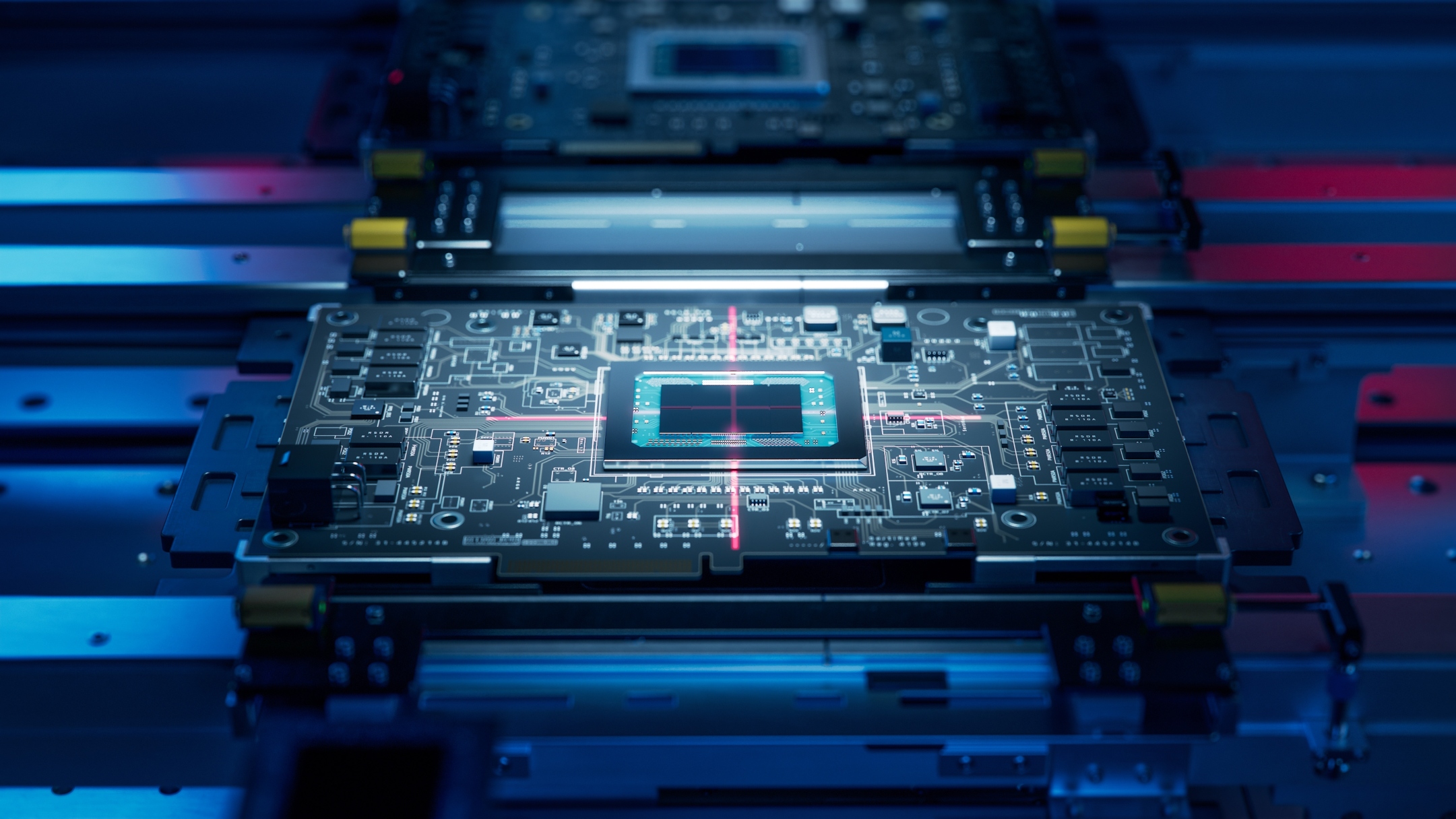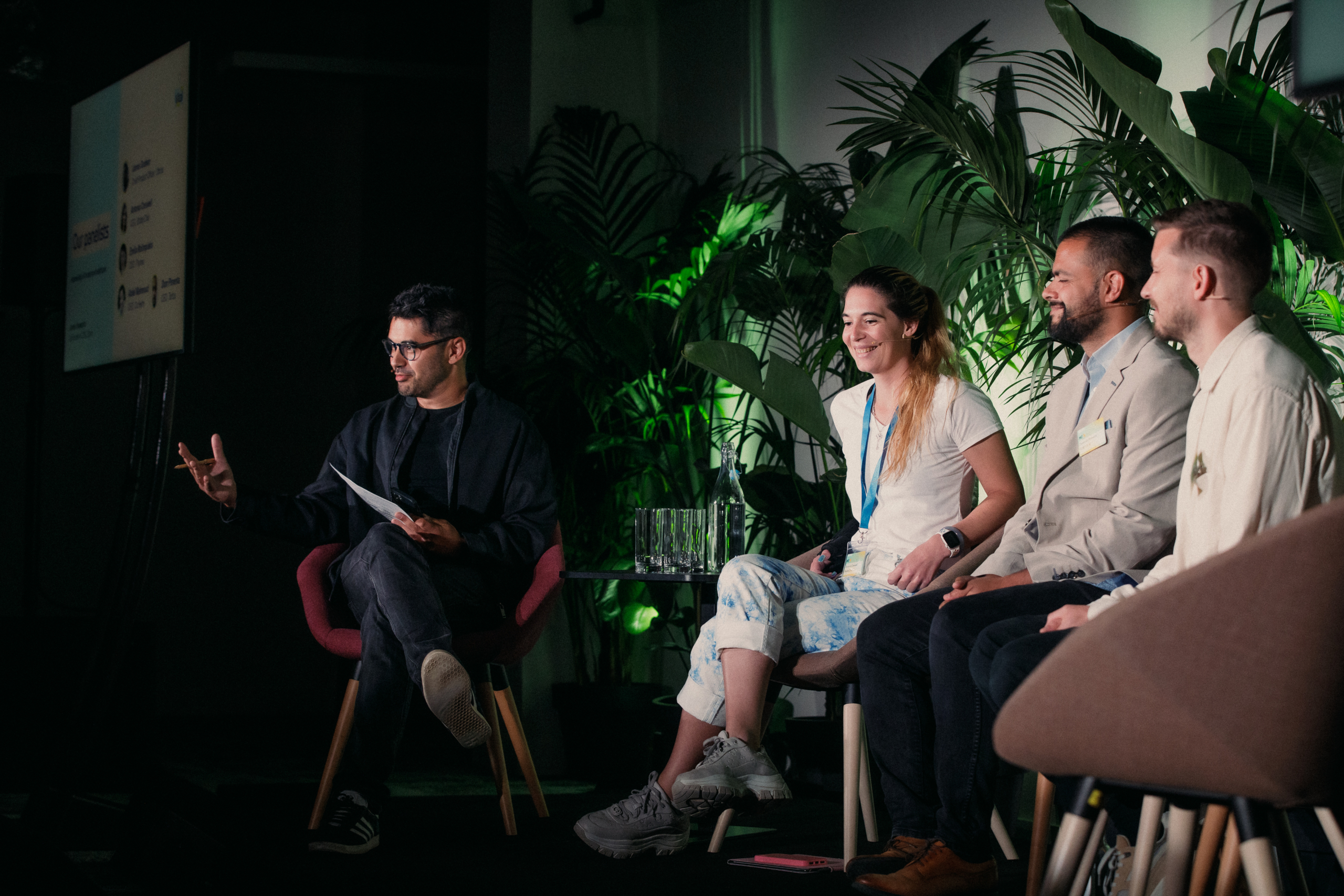Gazing into the crystal ball: deep tech trends to watch in 2024
Deep tech, as any investor worth their salt well knows, is a long game. Truly pioneering technology takes years to develop – and often solves for a problem that’s so future-facing, no mature market for it exists.
But although investing in it rewards patience (not to mention expertise, and even a sprinkling of hope), we’re seeing it go from strength to strength. Last year, we on the Octopus Ventures deep tech team worked with government and other stakeholders to convene a series of events dedicated to uncovering what it takes to ensure deep tech start-ups have what they need to thrive in the UK.
The outcome was positive, with widespread recognition that deep tech may just hold the key to solving some of the greatest challenges of our age – and that by working together, investors, policymakers, higher education institutions and pioneering founders can create the kind of conditions needed for the industry’s innovations to flourish.
Last year was, without question, an historic one for deep tech. AI dominated the headlines, but breakthroughs were being made elsewhere, too. The UK conducted its first orbital space flight, while the isle of Unst, far to the north of the Shetland islands, received the green-light to open the UK’s first vertical spaceport.
From an investment perspective, deep tech bucked wider bearish trends, making an outsize contribution to the Q3-exit-rebound. As a new generation of pioneering start-ups come of age, there’s no question that their remarkable technology is poised to shape the future.
Shaping the future and predicting it are, of course, two very different things: the former a bold ambition, the latter more like hubris. Still, with that said – and in cheerful anticipation of the likelihood of a couple of oversights (at least) – we thought we’d share our pick of the trends and developments we think are likely to shape the deep tech landscape in 2024.
AI (of course)
The breakout star of 2023 is set to continue blazing a trail of disruption. Still, large language models (LLMs) will keep coming up against the same problems (such as lack of understanding/reasoning, hallucination and cost) which fundamentally limit what the models can be applied to. Even so, there are a host of industry-spanning applications in which their capabilities can shine. Adoption will continue.
A decade ago, when presented with a new ecommerce venture, the question on every VC’s lips was ‘What if Amazon move into this space?’ In 2024, we’re likely to see this repeated in AI with OpenAI, as the organisation introduces new categories and features.
With that said, we’ll also learn whether OpenAI has defensibility – or if Google’s Gemini (or one of the other very well-funded competitors) has what it takes to start eating into its market share and margin. The market is growing fast enough that this is unlikely to matter in 2024, but our bet is OpenAI doesn’t – and they do.
Education is one of the areas we expect to see disrupted, as the first generation of generative AI (genAI) tutors take hold to deliver tailored, level-adjusted education – en masse. School may never be the same again.
(Hopefully) Unrelated to that, we should expect to start discovering the first real problems with AI. We’re not talking about Skynet – instead, as AI tools enter wider usage, there’s a real risk that we’ll see them deployed by bad actors.
This year governments and multinational organisations will begin to introduce AI related legal frameworks – but we’re unlikely to see any resolution on whether training AI on copyrighted material counts as misuse. There are also ongoing debates around the ownership of AI-created works. Late last year, UK patent courts confirmed that AI can’t be credited as an inventor on patents. Issues like these aren’t going away – and point towards the extraordinary legal complexity AI introduces.
Per the as-yet-insurmountable problems problem, human workers won’t be replaced yet. 2024 will be the year that vertical-specific genAI and human workers synergise – we envision AI shouldering about 80% of the work with humans taking it up to 100%.
With more businesses adopting genAI, this year we at Octopus Ventures will be keeping an eye out for companies in the tool chain that help hone foundational models for more specific applications and integrate them into applications and products. The environmental and financial costs of deploying LLMs are sizeable, which is why we’re also interested in the hardware which runs and stores these models both in the cloud and at the edge. While this won’t be solved in 2024, the companies to address this may just be getting started.
Quantum Computing
We’re expecting a steady cadence of progress in quantum computing (QC) this year, but no major breakthroughs. There’ll be no clear winner in the QC hardware race, although neutral atoms have come up to the outside to become a serious contender in the top 5: neutral atom, silicon spin, photonic, ion trap, superconducting circuit.
We’re only likely to see limited useful quantum advantage (when QCs are provably better than classical computers at given tasks) demonstrated in a few narrow fields this year. Still, organisations will continue to buy access to early machines to prepare themselves, and quantum winter will be kept at bay (for now).
Progress isn’t linear, and breakthroughs can have extremely interesting spin off applications – QC is no different. This year we’ll be keeping a particularly close eye on quantum sensing. If you’re building in this space, get in touch!
Semiconductors
The push for semiconductor sovereignty isn’t over, as Europe, the US and Asia continue to invest in the infrastructure needed to make semiconductor technologies for greater independence – and build it, too.
When it comes to hardware, the NVIDIA H200 will land with a whopping 1.6x faster GPT3 inference. It will also cost more than its weight in gold. We don’t expect the AI bubble to burst any time soon, but if it does, NVIDIA will certainly feel it. Otherwise, the company is in an extremely strong position, although we can’t help but think that the diminishing returns between generations of GPU hardware opens the door for new approaches. NVIDIA’s prices are high, and the field is becoming crowded with challengers – in other words, it’s no time for complacency.
Automotive will continue to be a major growth area in semiconductors, driven (ahem) by the global gearshift (sorry) towards electric vehicles (EV).
RISC-V will keep gaining momentum this year, as will ‘custom compute,’ with both offering a way to improve performance and differentiate.
Between EVs and sustainability, power electronics is looking like an ever-more exciting space in 2024 – and it’s one we’re interested in. If you’re building here, let us know!
Space
Although NASA has pushed back its Artemis II crewed moon mission to 2025, space is still likely to be a little crowded this year, with JAXA, Astrorobotic, Intuitive Machines and China amongst the queue of organisations and countries visiting the moon or making deliveries there.
The ‘new space’ market will keep growing, powered by private space companies. Space X is aiming for over 100 launches in 2024, which should be achievable given its 2023 launch schedule (which saw 96 orbital missions lift-off).
Of course, those and others are contributing to an almost unmanageable number of satellites in orbit. The risk of collisions is growing, as is awareness of space junk (our own Maiuran Chandrakumaran shared some thoughts on this recently). If you’re sending your next venture into the stratosphere or beyond we want to hear from you!
Climate tech
Solar is still the cheapest form of energy going, and we expect the exponential curve of solar adoption to continue this year. That means more investment in both smart grid infrastructure and storage.
In 2024, we’ll also see nuclear go squarely back on the map. As part of its France 2030 plan, the country has committed $1 billion to nuclear projects (with an emphasis on start-ups working on small nuclear reactors). Japan, which had planned to phase out nuclear in the wake of the Fukushima accident, has revised its policy in the face of rising energy prices and repeated energy crunches. With a hotly contested election coming up this year in the UK, both the government and opposition Labour party have made tentpole commitments to enhancing the country’s nuclear power capability.
The need for innovation is, unfortunately, set to become more acute. We’ve just seen the warmest Christmas temperatures on record in the UK, and elsewhere El Nino is predicted to peak. The year should bring correspondingly bold innovations in climate mitigation.
Countries around the world will also continue to (try to) break their reliance on China for graphite and rare earths. The lithium rush in Africa is also growing more complicated. The US is pioneering
here, with recent wins for home grown lithium production. Companies such as Redwood Materials are doing amazing work in recycling, nudging us ever closer towards a circular supply chain. We’re hoping for more of this.
Metaverse
While AI might benefit from some contact with the real world, the trough of disillusionment with the virtual metaverse continues – no matter how much money Meta spends. The company has been throwing money at augmented reality (AR) eyewear – and had success with a prototype (described by the CTO as ‘the most advanced piece of technology on the planet in its domain’) but the cost remains an as-yet insurmountable obstacle. In the consumer space, Apple’s forthcoming Vision Pro is also too pricey to really move the needle, but watching the market’s reaction will certainly be interesting.
It seems everyone is still waiting for the critical discoveries, capable of unlocking the holy grail of AR, to be made. It’s a slow process, but when they arrive these breakthroughs will have applications that extend beyond the AR market, such as microLEDs, edge compute and more.
Biotech
We’re watching the impact of the first FDA approved CRISPR gene therapy, Vertex Pharma and CRISPR Therapeutics’ Casgevy. We’ll be paying close attention to patient impact, taking in post-market observations and looking at sales. Beam Therapeutic’s drug is following close behind – we’re hoping to see trial results for its Base Editing technology later this year.
There’s plenty more clinical trials data expected, from Pfizer’s Duchenne muscular dystrophy trial for a gene therapy, to Ventura 1 (Johnson & Johnson’s drug for depression), to Phoenix (Amlyx Pharmaceutical’s ALS drug), to Skyscraper 01 (Roche’s TIGIT antibody). All of these could well point to incredible progress in cancer treatment, neuroscience, mental health and genetic diseases and, if successful, should see some recovery in biotech public stocks. Wins in these areas should help lift the field after a challenging 2023 and could lead to M&A activity as pharma competes for revenue.
Last year the UK government made firm commitments towards cementing the country as a science superpower. Part of this, a fund supporting innovation in synthetic and engineering biology, should bear fruit, in the form of a new generation of start-ups in the field, which may well begin to emerge this year.
Talent
The last five years have seen organisations hoovering up talent in the AI/machine learning space, but it’s becoming ever clearer that for AI to live up to its potential, innovation in hardware is needed. At the moment, we’re seeing something of a bottleneck, with too little emphasis placed on hardware and semiconductor talent. It’s a bottleneck that’s set to become more apparent as the limitations of current hardware are thrown into sharper relief.
The growth of European and UK deep tech spin-outs is thrilling to watch, but as these companies scale into maturity we’ll need to see a corresponding growth in commercial and business leadership. Founders will need to upskill to match the leadership challenges they’ll encounter as their businesses grow. This is something we support founders in (read why we’ve added a coaching requirement to our term sheet here). Great leadership also means knowing when to hire – and how to do so effectively. This year our People + Talent team will continue to support all our founders in the how, who and when of hiring for critical commercial roles.
There we have it – our predictions for 2024. We’ll be checking back in on these in around 12 months to see how we did (and maybe gaze into the crystal ball, or its digital twin, to see what 2025 might hold). In brief, here’s what we’re keen to hear about – and who you can reach out to, to tell us about your pioneering solution in the space:
- Companies honing foundational genAI models for specific applications, and integrating them into applications and products: [email protected]
- Quantum sensing: [email protected]
- Semiconductors and Power electronics: [email protected]
- AI Hardware: [email protected]
- Space: [email protected]
- Biotech: [email protected]
- Climate: [email protected]
- People & Talent: [email protected]














